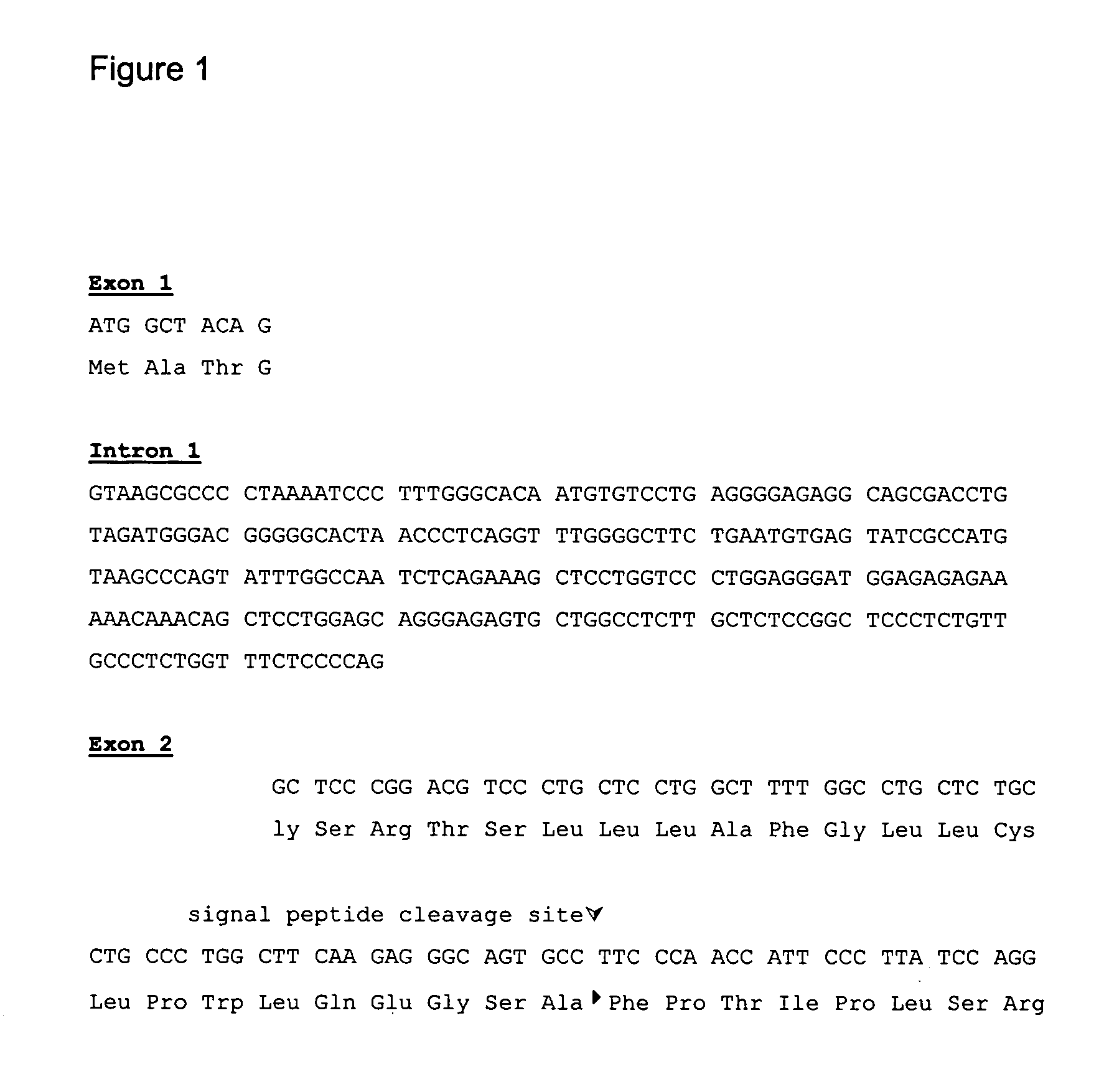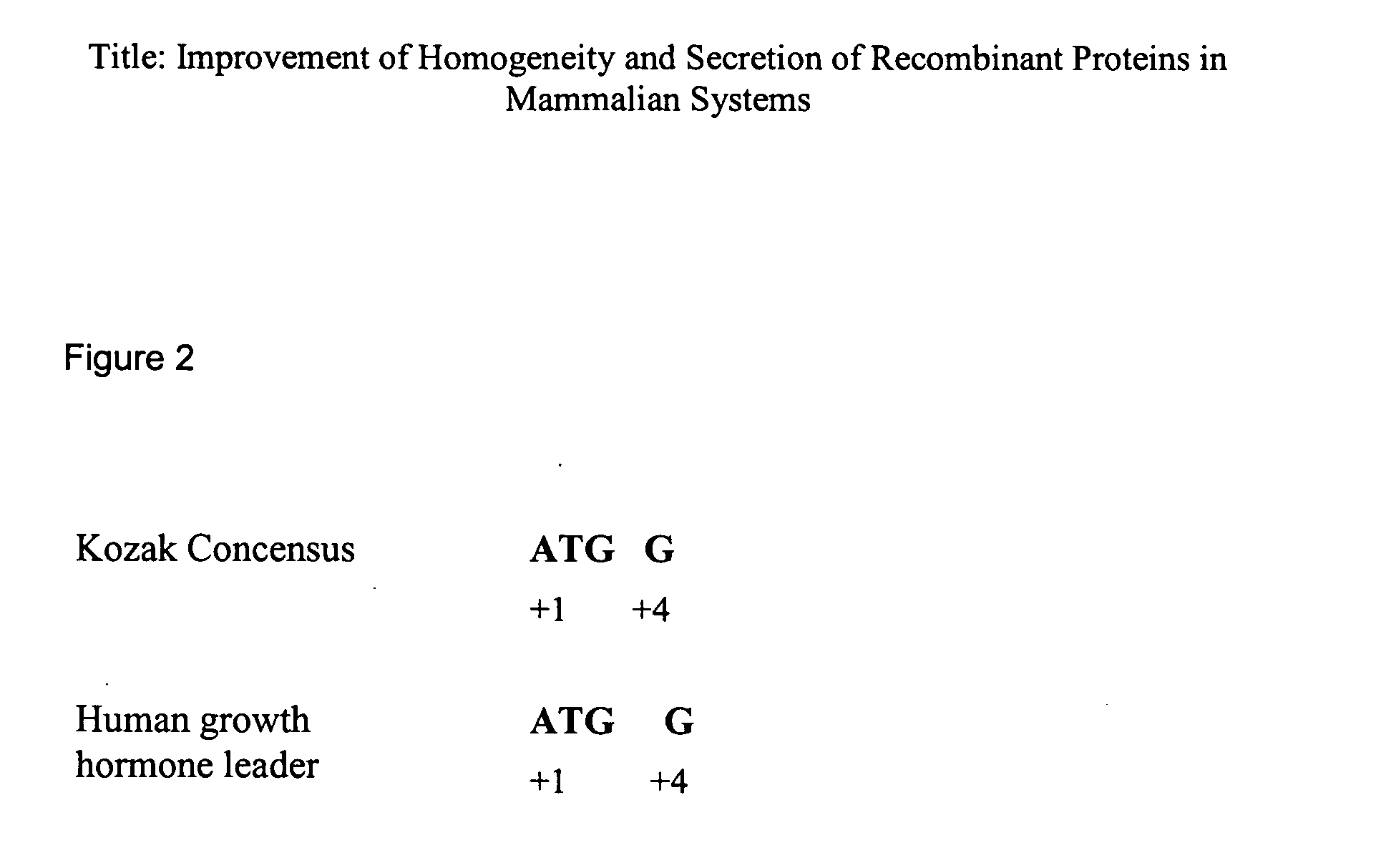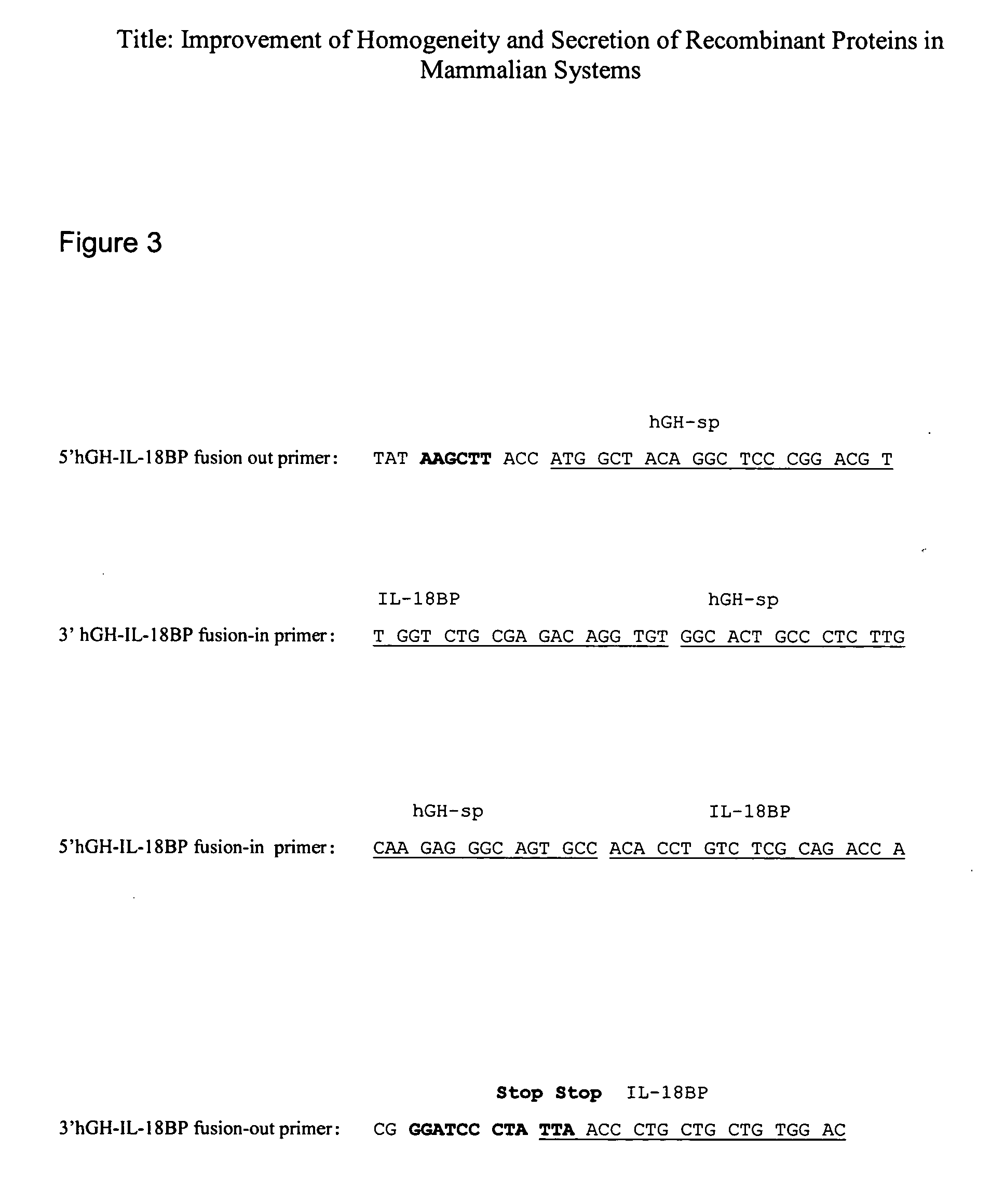Homogeneity and secretion of recombinant proteins in mammalian systems
a technology of recombinant proteins and mammalian systems, applied in the field of homogeneity and secretion of recombinant proteins in mammalian systems, can solve the problems of limiting the expression rate, unable to proceed towards the secretory compartment, and unsatisfactory use of natural regulatory signals for overexpression in mammalian systems, so as to improve homogeneity and/or secretion, and accurate cleavage of signal peptid
- Summary
- Abstract
- Description
- Claims
- Application Information
AI Technical Summary
Benefits of technology
Problems solved by technology
Method used
Image
Examples
example 1
Establishment of the IL-18BP Producing Clone S10-21
[0066] The DNA of the natural signal peptide of the IL-18BP protein encodes for a non-optimal Kozak sequence because the +4 is A and not G therefore it was replaced by hGH signal peptide which exhibits an optimal Kozak sequence (FIG. 2 SEQ ID NO:3). The DNA fragment encoding the hGH signal peptide fused to the IL-18BP protein was introduced in a mammalian expression vector under the control of the SV-40 promoter and polyadenylation signal.
[0067] For the preparation of the expression vector, hGH signal peptide (without its intron, see FIG. 1) was fused directly to the cDNA coding for the mature hIL-18BP protein (variant A, accession number AF 110799 in the NCBI public databases) by PCR (FIG. 3 describes the primers used).
[0068] The hGH signal peptide (without its intron) was amplified by PCR using pXGH5 (Selden et al. 1986) as a template and two primers, a) a primer containing sequences from the beginning of the hGHsp (5′hGH-IL-18...
example 2
Establishment of the IL-18BP producing clone 22C2-11
[0075] The DNA of the natural signal peptide of the IL-18BP protein encodes for a non-optimal Kozak sequence because the +4 is A and not G therefore it was replaced by hGH signal peptide which exhibits an optimal Kozak sequence (FIG. 2 SEQ ID NO:3). The DNA fragment encoding the hGH signal peptide fused to the IL-18BP protein was introduced in a mammalian expression vector under the control of the CMV promoter and the human growth hormone polyadenylation signal.
[0076] For the preparation of the expression vector, the DNA encoding the hGH signal peptide (without its intron see FIG. 1) was fused directly to the cDNA coding for the mature hIL-18BP protein (variant A accession number AF 110799) by PCR using the expression vector generated in example 1 (PSIL18BP) as a template and two primers, a) the forward primer ACGCGTTCGACGCCACCATGGCTCCCGGACG (SEQ ID NO:4) comprising a SalI restriction site, and the first 21 bases encoding the cDN...
example 3
Purification and N-Terminal Analysis of the IL-18BP Produced
[0082] The IL-18BP in the supernatant of all the producing cells (S10-21 and 22C2-11 examples 1 and 2 respectively) was purified by immunoaffinity chromatography. N-terminal analysis of the IL18-BP expressed with the signal peptide of hGH, revealed only the correct species of IL-18B with the following N-terminal amino acid sequence T P V S Q T T T A A T A S V R (SEQ ID NO:10). These results show that IL-18BP is homogeneously produced, from different expression vectors, by using the hGH signal peptide in which, in contrast to the IL-18BP natural signal peptide, the Kozak signal is of optimal context.
PUM
| Property | Measurement | Unit |
|---|---|---|
| Mass | aaaaa | aaaaa |
| Mass | aaaaa | aaaaa |
| Mass | aaaaa | aaaaa |
Abstract
Description
Claims
Application Information
 Login to View More
Login to View More - R&D
- Intellectual Property
- Life Sciences
- Materials
- Tech Scout
- Unparalleled Data Quality
- Higher Quality Content
- 60% Fewer Hallucinations
Browse by: Latest US Patents, China's latest patents, Technical Efficacy Thesaurus, Application Domain, Technology Topic, Popular Technical Reports.
© 2025 PatSnap. All rights reserved.Legal|Privacy policy|Modern Slavery Act Transparency Statement|Sitemap|About US| Contact US: help@patsnap.com



